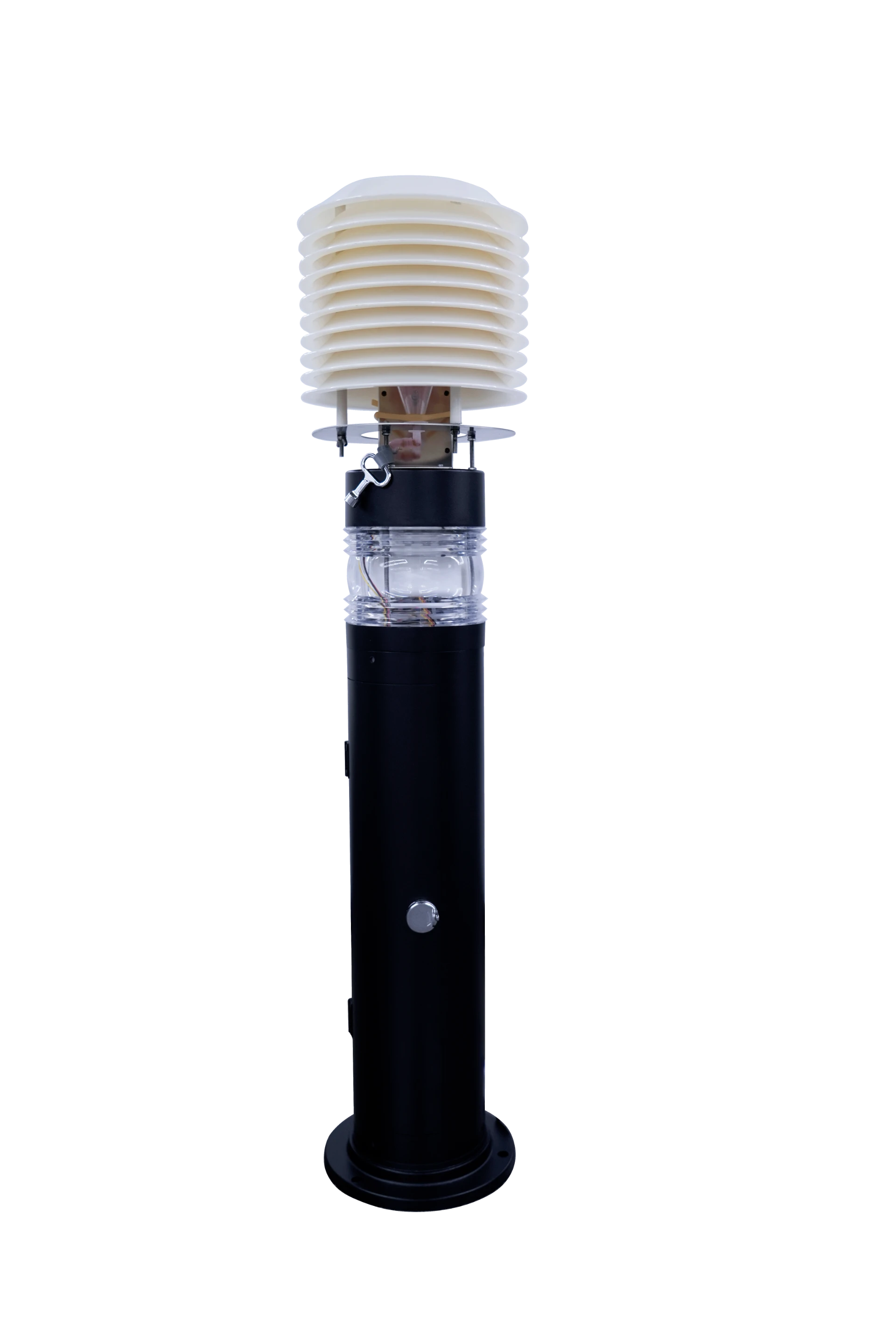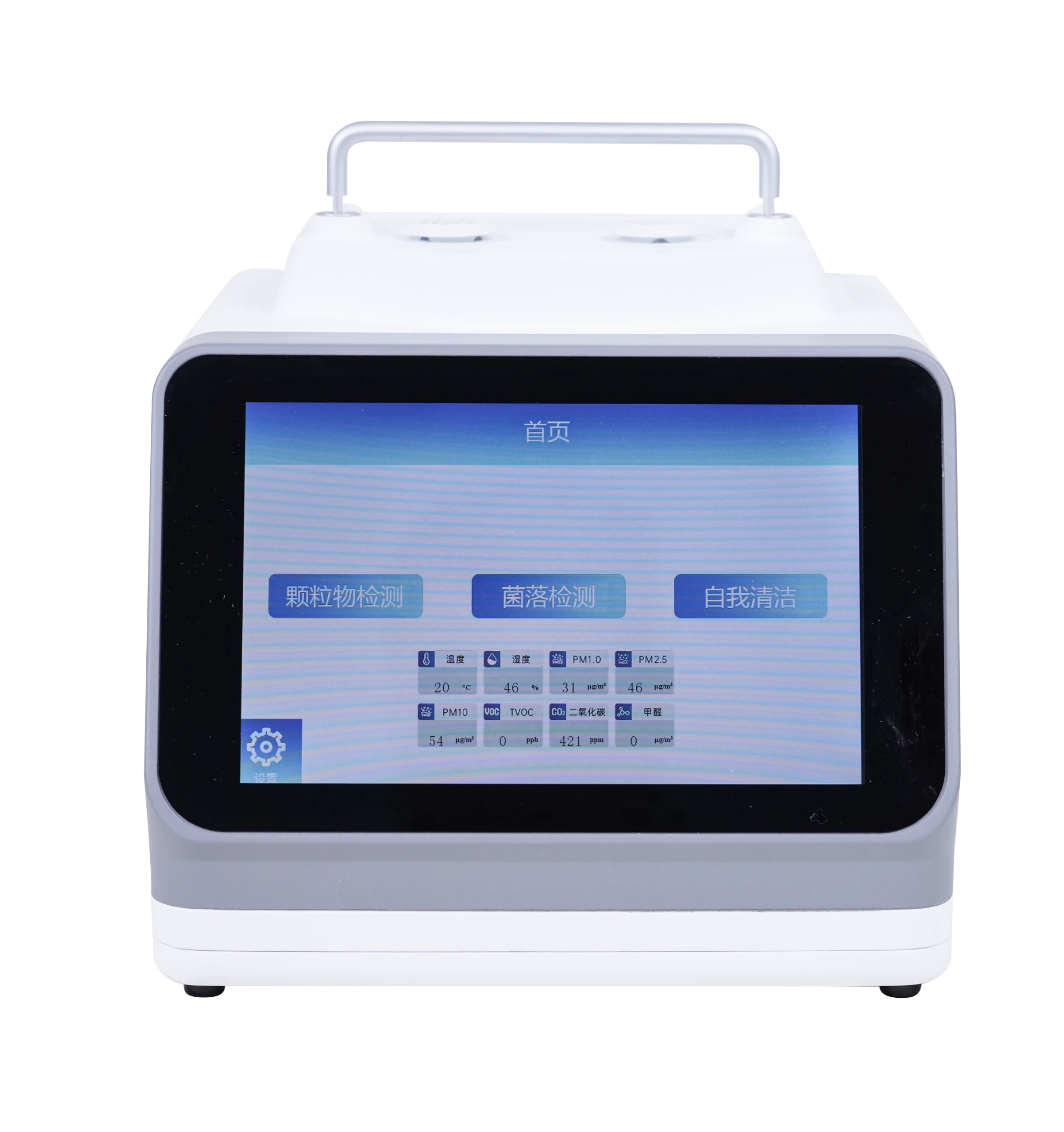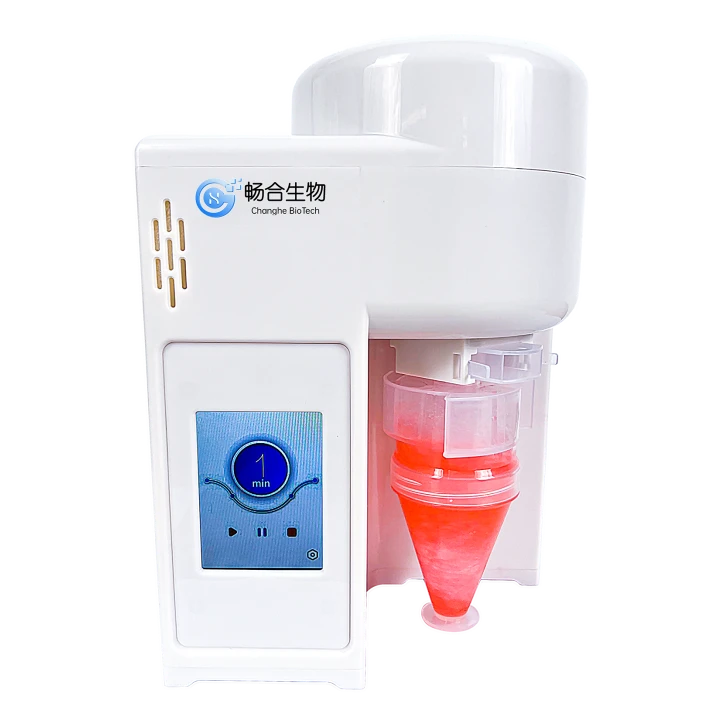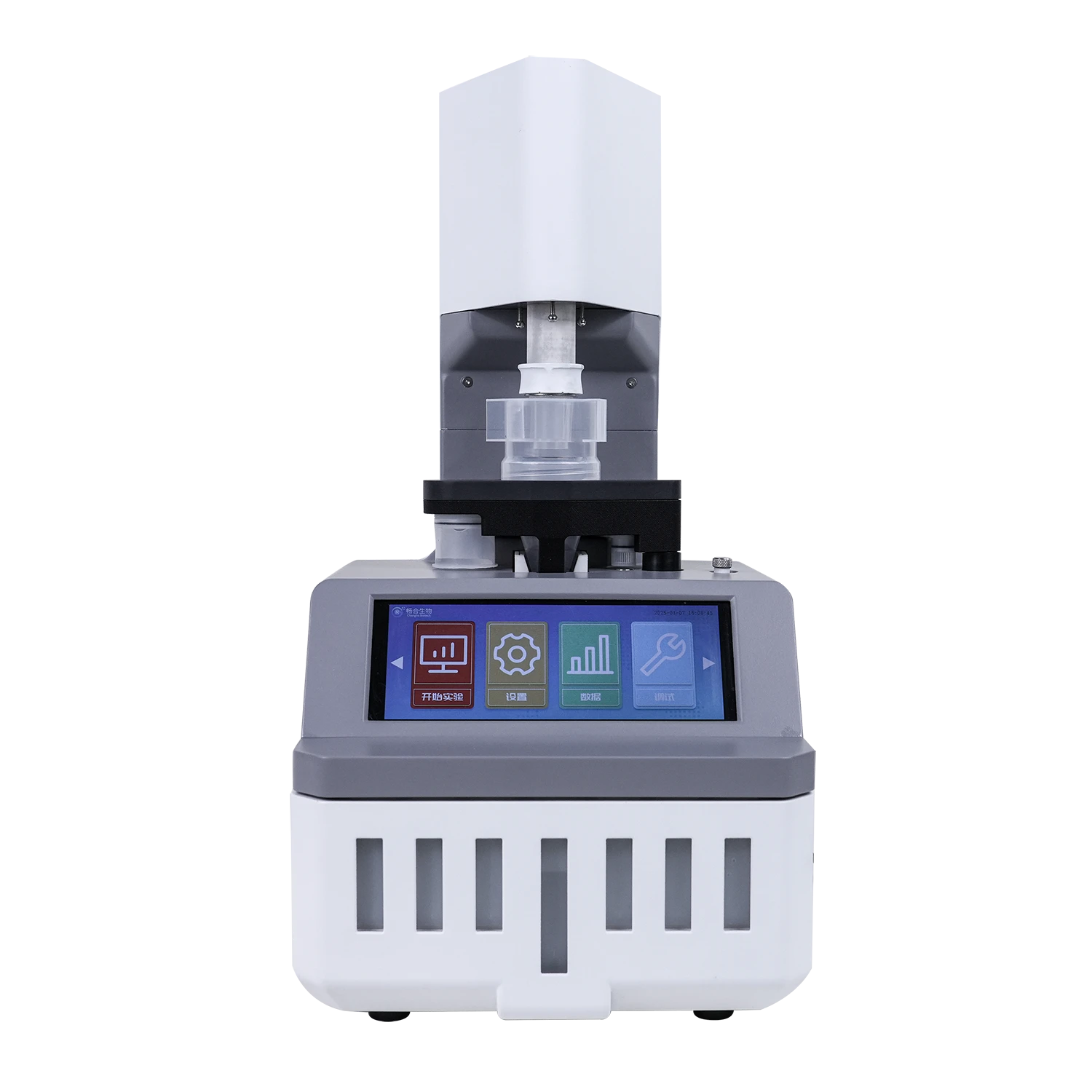
High-Efficiency Bioaerosol Sampler for Accurate Biological Sampling
Jul . 26, 2025 10:01
Back to list
High-Efficiency Bioaerosol Sampler for Accurate Biological Sampling
Bioaerosol Sampler: Modern Trends, Innovations & Professional Insights
Company: SUZHOU CHANGHE BIOTECH CO., LTD
Product Introduction: CA-1-300 bioaerosol sampler is based on a wet-cyclone type operation, meeting the sampling needs of bioaerosols in multiple scenarios. Learn More
- Email: SJ.NI@CH-BIO.CN
- Phone: 0086 13472814759
- Address: FLOOR 7, NO.1588 HUHANG ROAD, SHANGHAI, CHINA
Product Introduction: CA-1-300 bioaerosol sampler is based on a wet-cyclone type operation, meeting the sampling needs of bioaerosols in multiple scenarios. Learn More
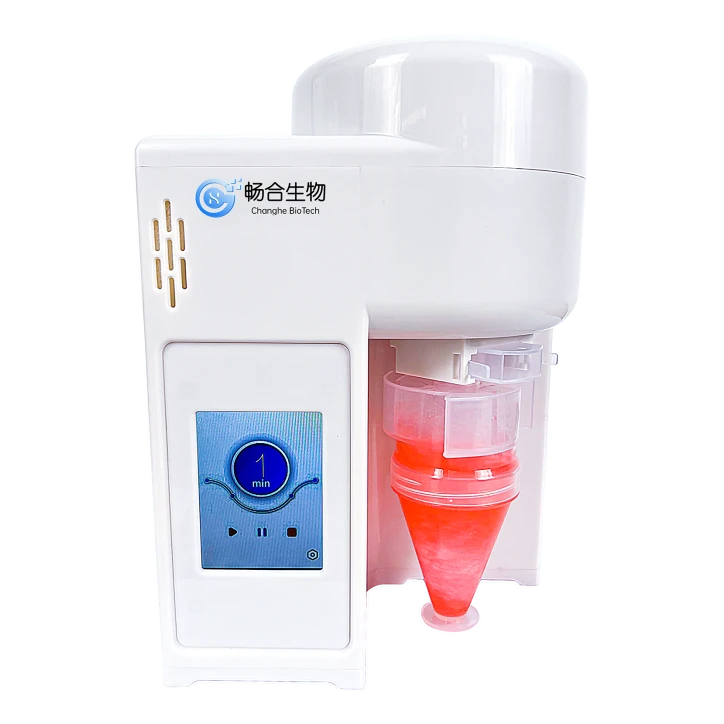
Industry Overview & Trends for Bioaerosol Samplers
The global focus on air quality, pandemic preparedness, and environmental monitoring has fueled tremendous growth in the bioaerosol sampler sector. Applications span hospitals, pharmaceutical clean rooms, food factories, animal facilities, public transport, and more. With increasing standards for airborne biological monitoring and the advent of advanced detection techniques, professional biological sampler solutions have become mission-critical.
Cutting-edge biological samplers now incorporate automation, high collection efficiency, and real-time data integration with laboratory networks (source: Tropical Medicine and Infectious Disease [MDPI]). High-precision cyclone-type and impaction samplers dominate, given their ability to efficiently capture and preserve viable microorganisms across critical particle size ranges (1~10μm).
Industry Trend Highlights:
Cutting-edge biological samplers now incorporate automation, high collection efficiency, and real-time data integration with laboratory networks (source: Tropical Medicine and Infectious Disease [MDPI]). High-precision cyclone-type and impaction samplers dominate, given their ability to efficiently capture and preserve viable microorganisms across critical particle size ranges (1~10μm).
Industry Trend Highlights:
- Rapid adoption in pharmaceutical and hospital environments for air contamination control.
- Use in monitoring environmental pathogens and airborne allergens due to climate change.
- Increasing stringency from global standards such as ISO14698 & EN13098.
- Shift towards real-time, automated, and portable instrument design.
- Integration with digital reporting platforms, facilitating laboratory and regulatory compliance.
Bioaerosol Sampler Technology & Key Parameters
Bioaerosol Sampling leverages mechanical and fluidic principles to collect airborne microorganisms (bacteria, viruses, spores). The bioaerosol sampler (CA-1-300) uses the wet-cyclone method, which maximizes viable microorganism capture and minimizes particle loss.
Typical competing sampler types include:
Typical competing sampler types include:
- Impaction Samplers: Direct particles onto agar plate surfaces for culture.
- Filtration Samplers: Trap particles on high-efficiency filters (analysis by elution or PCR).
- Liquid-cyclone Samplers: Vortex airborne microorganisms into liquids for high-efficiency downstream recovery.
| Model | Sampling Method | Aerosol Flow Rate (L/min) | Particle Size Range (μm) | Collection Efficiency | Power/Operation |
|---|---|---|---|---|---|
| CA-1-300 | Wet Cyclone | 300 | 1~10 | ≥95% for 1μm | AC/DC, Automated |
| Cassette-based | Filter | 5-30 | 0.3~6 | 70-80% | Battery |
| Six-stage Impactor | Impaction | 28.3 | 0.65~7 | 85-95% | manual |
| High-volume Cyclone | Dry Cyclone | 400-1200 | 0.5~10 | 90-97% | Engine, AC |
Key Parameters: Sampling Flow Rate; Collection Efficiency; Recovery Rate; Particle Size Cut-off; Sterility; Portability; Automation.
Fig.1 - Aerosol Flow Rate Trends in Different Bioaerosol Sampler Types
Fig.2 - Bioaerosol Sampling Collection Efficiency vs. Particle Size
Fig.3 - Market Share Distribution of Biological Sampler Methods
Fig.4 - Technical Specifications: CA-1-300 vs. Major Global Models
Application Scenarios and Industry Cases
Bioaerosol samplers, especially advanced wet-cyclone based instruments like the bioaerosol sampler CA-1-300, are widely employed in:
- Hospitals & Clinics: Detecting airborne bacteria and virus to assess infection risks in ICUs, operation rooms, and quarantine facilities (see: ScienceDirect: Bioaerosol Surveillance in Hospitals).
- Biopharma Cleanrooms: Verifying compliance with GMP/ISO microbial air monitoring standards for sterile production zones.
- Food & Beverage: Monitoring microbial contamination during processing & packaging (Frontiers in Microbiology).
- Animal Facilities: Containing the spread of zoonotic pathogens or veterinary infectious agents.
- Subways/Airports: Routine air microbial content analysis for public health safety, particularly during pandemics.
- Research Institutions: Studying bioaerosol formation, transport dynamics, and pathogen viability through environmental cycles (see: Nature Reviews Earth & Environment).
Product Spotlight: CA-1-300 Bioaerosol Sampler
CA-1-300 bioaerosol sampler from SUZHOU CHANGHE BIOTECH CO., LTD integrates state-of-the-art wet-cyclone technology for maximum viable collection of airborne microorganisms.
- High Flow Rate: 300 L/min supports rapid high-volume sampling, up to 120m3 per hour.
- Wide Particle Capture: Effectively recovers microorganisms in 1~10μm range (critical for bacteria and viral particles).
- Automation: Supports automatic data logging, preset operation cycles, and remote monitoring.
- Versatile Applications: Hospital infection control, food manufacture, environmental health, biopharma, and more.
- User Safety: Fully enclosed wet design reduces operator biological exposure.
- Compliance: Designed to meet ISO14698, Chinese GSP, FDA, GMP, and international biosafety standards.
Professional FAQ: Biological Sampler Technology Explained
Q1: What material is used in the construction of the CA-1-300 bioaerosol sampler?
A1: The sampler is constructed from chemical-resistant 316L stainless steel and high-grade biomedical polymers, ensuring corrosion resistance, ease of sterilization, and inertness for biological sampling applications.
Q2: What are the standard dimensions & weight of the CA-1-300?
A2: The standard CA-1-300 measures approximately 352×258×520mm (L×W×H) and weighs ~17kg, enabling both desktop and mobile use in the field.
Q3: Which installation and biosafety certification standards are met?
A3: The device is compliant with ISO14698 (biocontamination control), CE-marked, meets GMP cleanroom standards, and includes HEPA exhaust filtration for operator safety.
Q4: What is the typical maintenance cycle for this biological sampler?
A4: Routine monthly cleaning and calibration is recommended. The wet-cyclone design allows for automated washing cycles, minimizing user contact with biohazards.
Q5: What detection methods can be connected downstream of this sampler?
A5: Samples can be analyzed via culture, PCR/RT-PCR, ATP bioluminescence, and metagenomic sequencing—enabling specific identification of airborne bacteria, fungi, and viruses.
Q6: What is the minimum detection limit for airborne pathogens?
A6: Using high-volume sampling with 95%+ efficiency, the CA-1-300 can detect pathogens down to ~3~5 CFU/m3 (for bacteria), depending on environmental condition and analysis technique.
Q7: How is data recorded and exported?
A7: Data including flow, sampling time, temperature, RH, and operator metadata are automatically logged. The system supports USB and wireless data export for reporting and digital traceability.
Global Trends & Market Outlook for Biological Samplers
The market for biological sampler technology is projected to grow at a CAGR of over 8% (2023-2028)[1], driven by investments in public health, pandemic preparedness, biopharma, and indoor air quality. Stringent policies and environmental events (such as COVID-19, avian influenza) have highlighted the essential value of high-efficiency, rapid-response bioaerosol sampler platforms.
Notably:
Notably:
- Asia-Pacific drives new installations, especially in pharmaceutical and metro air quality monitoring.
- Continuous R&D focuses on miniaturization, IoT integration, and multi-target biosensing.
- The biological sampler the cycle (i.e., the full sampling-to-analysis process) is seeing breakthroughs in automation, reducing time-to-result from hours to real-time monitoring.
Conclusion: Professional Expertise, Authoritative Product, Trusted Choice
In conclusion, the bioaerosol sampler is at the forefront of modern biosafety and environmental monitoring. SUZHOU CHANGHE BIOTECH CO., LTD, leveraging decades of experience and innovation, delivers premium grade biological samplers designed for today's complex application needs. The CA-1-300 exemplifies EEAT (Expertise, Authoritativeness, Trustworthiness) with field-proven performance, adherence to global standards, and robust support.
As aerosol-borne health challenges increase, investing in advanced bioaerosol sampler technology is essential for laboratory, public health, and industrial users worldwide.
As aerosol-borne health challenges increase, investing in advanced bioaerosol sampler technology is essential for laboratory, public health, and industrial users worldwide.
References & Industry Sources:
- NCBI. "Recent Approaches in Bioaerosol Sampling and Detection" [View]
- MDPI Tropical Medicine and Infectious Disease. "Recent Advances in Bioaerosol Collection and Detection" [View]
- ScienceDirect. "Bioaerosol Surveillance in Hospitals" [View]
- Markets and Markets. "Bioaerosol Sampler Market – Growth Analysis" [View]
- Nature Reviews Earth & Environment. "Bioaerosols: Structure, Evolution, and Environmental Impact" [View]
- Frontiers in Microbiology. "Bioaerosol Exposure in Industry" [View]
Latest news
-
AI-Powered Air Bacteria Sampling w/GPT-4 TurboNewsAug.01,2025
-
AI Air Sampling Bacteria Detection Kit | Accurate & FastNewsAug.01,2025
-
Accurate Air Mold Test with GPT-4 Turbo | Fast ResultsNewsJul.31,2025
-
High-Accuracy PCR Panel for Cats – Fast Diagnosis & Reliable ResultsNewsJul.30,2025
-
Advanced Bioaerosol Detection for Accurate Air and Mold TestingNewsJul.30,2025
-
PCR Panel for Cats - Accurate Feline Diagnostics SolutionsNewsJul.29,2025

